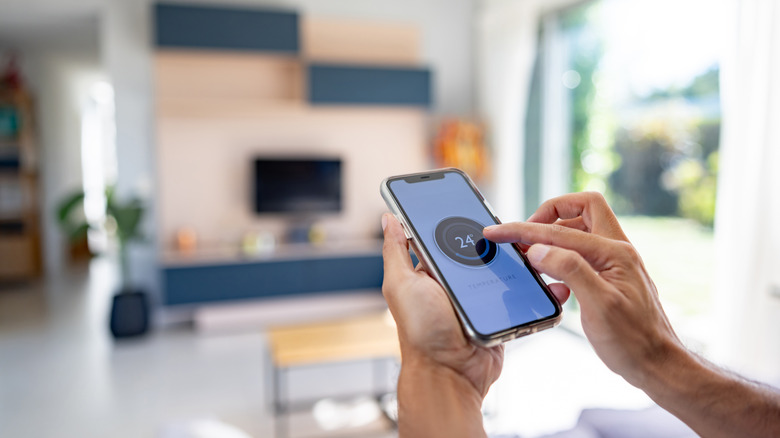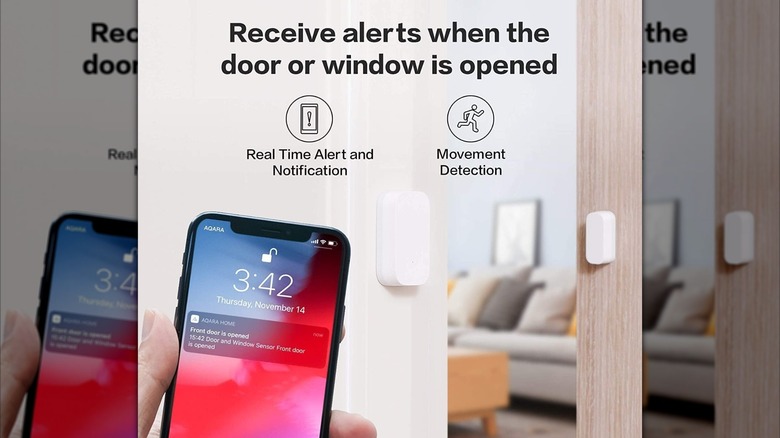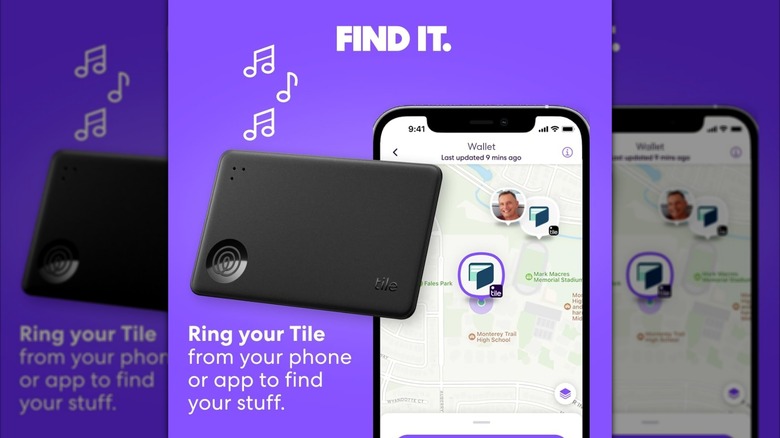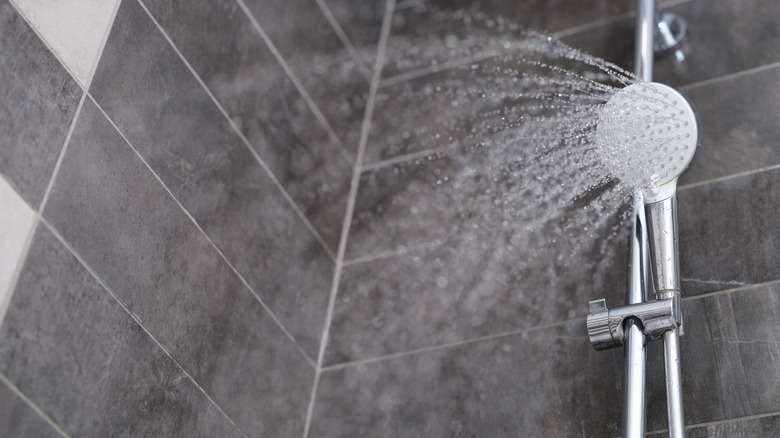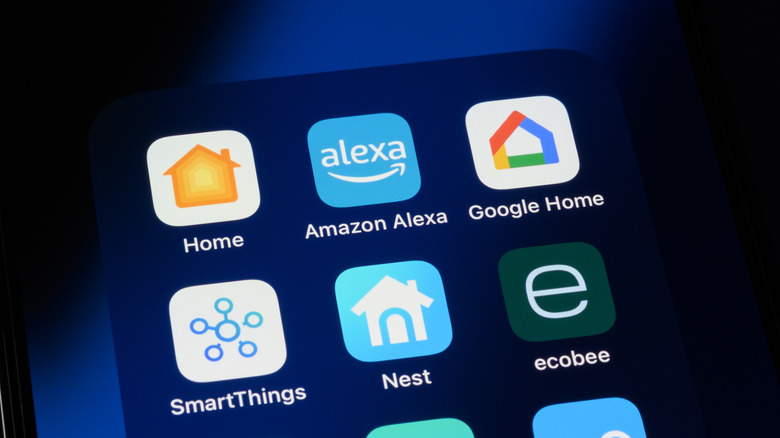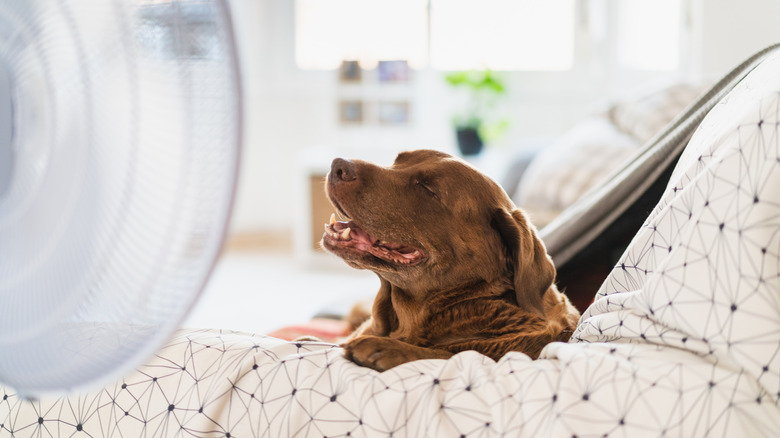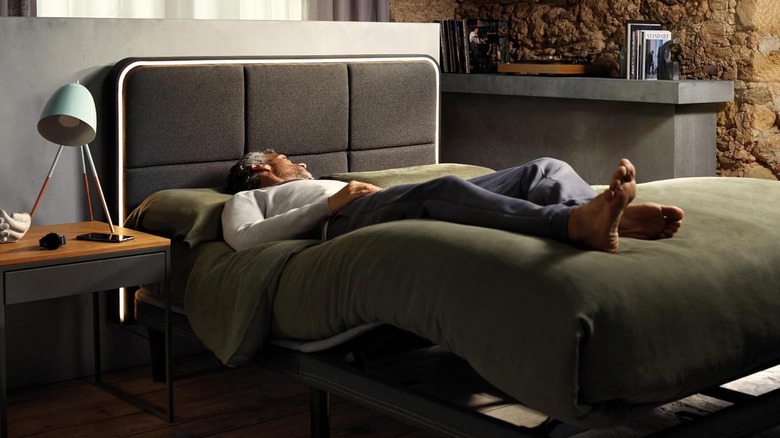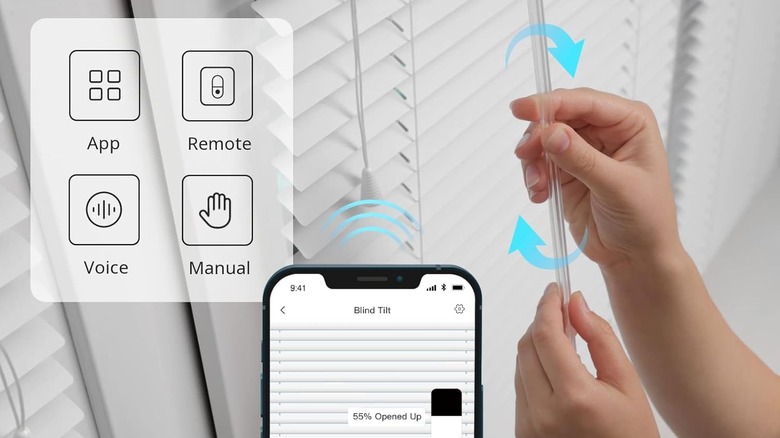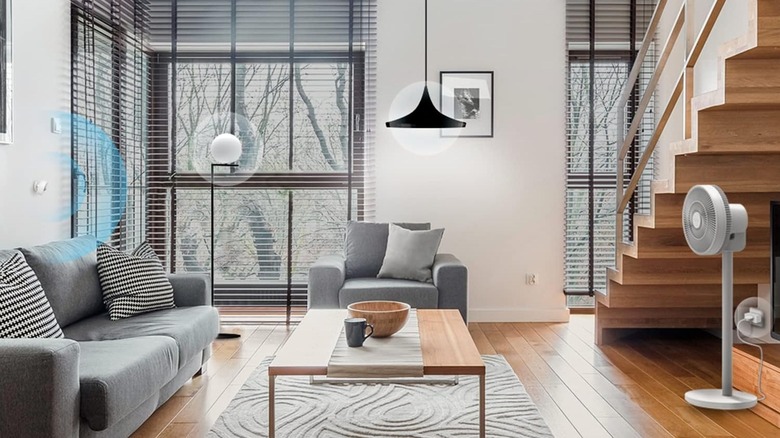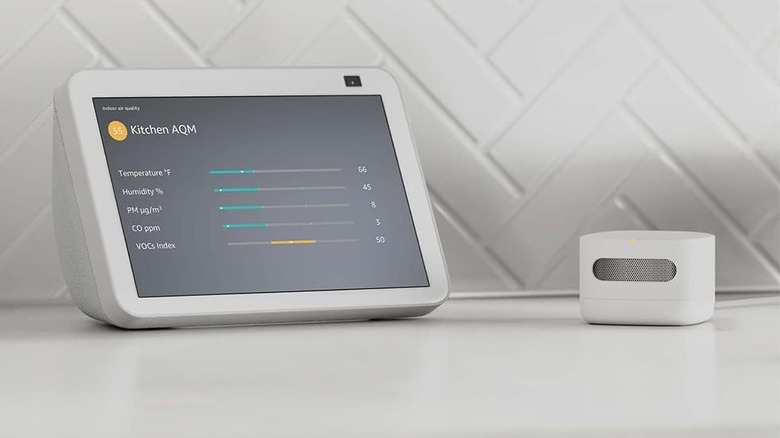13 Weird (But Genius) Ways To Use Smart Home Devices In Your Home
We may receive a commission on purchases made from links.
Smart device technology has grown enormously in recent years, and there's always something new to make life easier. It's even possible to smarten up dumb home devices with smart plugs. There's really no limit to what you can automate with smart home devices, though not every innovation is necessarily a practical or lifesaving step. Although smart devices can be used for plenty of offbeat scenarios, there are many that are absolutely genius, whether you're new to smart devices around the house or aiming to create a fully automated living experience.
Plus, there are so many benefits to smart home automation, including peace of mind, convenience, and time and energy savings. You can set up processes to happen automatically, saving yourself time while ensuring important tasks aren't forgotten. Many smart device automations also save energy, whether you're turning off appliances remotely or reducing your reliance on heating and cooling at home. Whatever your goals, there's no shortage of genius, yet weird, ways to use smart devices at home, and we've rounded up some of our favorites for you to try out.
Toilet seat contact sensor
While some unexpected uses of smart devices include things like medication reminders and mood lighting sensors, a toilet seat contact sensor is one of the weirdest yet useful ways to incorporate technology into your home. One obvious use for a contact sensor — one side on the toilet seat, one side on the tank — is to ensure that the toilet lid gets closed. You might have pets or children (or both), or just want to avoid a potentially uncomfortable nighttime seating experience. Either way, a contact sensor and phone alerts could help you avoid the pitfalls of an open toilet seat.
Other potential uses for a contact sensor could include setting up a timer that annoys you when you've been sitting (and scrolling) for too long, or automatic fan activation after a set amount of time. Some of these uses will require other smart products, like a Bluetooth or Wi-Fi-enabled fan, and a home assistant or IFTTT programming. While it's possible to engineer a DIY contact sensor, an Aqara Zigbee door/window sensor is one way to get started; you'll need an Aqara hub for this setup. Because one half of the sensor is bulky, you may want to consider a flat magnet for the toilet seat lid; some trial and error (and measuring) should get it dialed in.
Pet feeding timer
Not every piece of pet tech takes off, but automatic treat dispensers are one weird smart device that seems to be a hit. But what about tracking your pet's meals and ensuring they don't wind up with a second (or third) breakfast? There are a few different ways to limit your pet's access to extra treats, but some offbeat yet genius methods from DIYers include a light strip that remains lit for a set amount of time. Once you feed the dog, you hit the button for the lights, and the visual cue shows everyone in the house that dinner has been served.
One potential solution for pet overfeeding is using an Aqara Wireless Mini Switch (and Aqara hub) to activate an LED light strip like the Aqara LED Strip. Hitting a mini switch could also activate a text to everyone in the household that the dog has been fed; IFTTT has SMS workflow solutions for many devices. Depending on the brands you use and your automation setup, you may need to use third-party apps (like IFTTT Webhooks) to get everything to work together. Of course, part of the genius of this smart device setup is in the customization, although the family pets might not be as thrilled.
Wallet tracker alert
Although leaving your wallet at home might not be that big of a deal since the advent of digital wallets, forgetfulness can make for a stressful day. To ease worries over where your wallet is, you could invest in a card-shaped wallet tracker to make sure you never lose your cash and cards. For example, Life360 makes a wallet finder that plays a sound to guide you to your wallet, and it has a button that can serve as an emergency alert, depending on how you set things up.
A sensor that tells you when you've left your wallet at home might also be handy for the more forgetful folks among us. If you often try to walk out the door without your wallet, even a simple fix like an AirTag could help you keep track of it.
Another solution (one that doesn't involve others receiving alerts about AirTags traveling with them) would be to attach smart tracker tags to your wallet or other devices. Amazon even sells a set that allows you to set off an alarm if you can't find your belongings, and you don't need a smartphone for the Amazon Basics Key Finder set.
Wet laundry reminders
There's nothing worse than running a load of laundry, only to realize later that no one put it in to dry, and now it smells and needs another wash. Inventive DIYers suggest creating a setup to alert everyone in the household (or, specifically, in the vicinity of the laundry room) that laundry is waiting. There are a few potential ways to do this, depending on how annoying you want your reminders to be, but the setup could start with a power-sensing plug to determine when the washer stops. For example, a TP-Link Tapo smart plug can handle 15 amps and detect how many amps the washer is actively using.
Setting smart statuses for different amp usage levels means you can tell your smart devices when the washer is on or off and attach alerts for the latter. When the power to the washer drops off, a smart home trigger could turn on a light, audibly alert those nearby that the machine is done, or send texts to whoever is in charge of the chore. With Amazon Alexa's audio-detecting feature, you can also have Alexa broadcast the washing status based on its detection of the end-of-cycle beep. From there, reminders make sure the soggy laundry doesn't stay that way.
Shower timers
Smart showers are now a thing, and if you're keen on saving energy on your power and water bills, a smart showerhead might be the perfect smart home solution. Moen, for example, lets you control your shower by voice, phone, or buttons. Kohler has a similar setup that controls everything from water temperature to water flow style. Ready-made systems are easy to incorporate into your smart home, but there are some DIY methods worth mentioning, too.
For example, a Govee humidity and temperature sensor in the shower could detect when the water turns on. That could trigger a timer, with countdown alerts at whatever interval you choose. One way to create this system would be using IFTTT integrations, with a Govee alert triggering a chain of other actions, like the timer and notifications. Another scenario could involve a button trigger, like an Aqara Wireless Mini Switch, that sets off a playlist timed for the ideal, energy-saving shower length. The options are nearly limitless, but an IFTTT applet for a button press starting a playlist on a specific device is one way to go about it.
Water temperature monitor
Sticking a body part into the water stream is the old-fashioned way to check the shower temperature. These days, we have other ways to check water temperature that don't involve potential burns or an icy bath. Some industrious DIYers came up with the concept of checking the outgoing temperature of their water heater, which allows them to set off a flashing light when the shower water is at the ideal temperature. OpenTherm, a language for thermostats and heating systems, lets you hack into your home's boiler ... and be a little lazier.
While the utility of such a smart system is limited, it's also genius. It might be worth trying whether you're trying to save energy, are very particular about your shower temperature, or both. Not only can you use smart devices like Google's Nest to monitor your boiler temperature (and adjust it remotely), but you can also set up alerts to receive whatever kind of notification you want related to water temperature throughout the house. While most of the applications are probably related to energy savings, it also sounds like a luxury to have your shower tell you when it's time to get in.
Summoning setup
Parents will love this very weird but also genius hack for smart home devices. Unless you already have an intercom system in your house (or mansion), or even if you do, you'll want to create a "summoning" setup for whichever member of your household keeps everyone else waiting. The possibilities are truly endless, but one potential scenario is a "summoning" button for each person in the household, possibly placed by the front door or maybe in the kitchen, for mealtime summoning purposes.
Using a smart button, some automations behind the scenes, and smart devices or lights in each room, you can easily create a system that's too annoying for your kids (or other family members) to ignore. For example, you could connect each of the four YoLink FlexFob's buttons to a separate LIFX smart bulb. Then, you can use IFTTT to program the YoLink to flash each light bulb to summon that person. At the same time, an audio alert could come from a smart device like an Alexa Echo. Or, you could set up a routine in Alexa (or another voice assistant) to verbally ask Alexa to summon whoever you need, complete with flashing lights and annoying noises.
Humidity alerts
Water leak sensors are a lesser-known smart gadget worth trying, but there's another reason to monitor humidity in your home. Whether you live somewhere with high or low humidity, your home's heating and cooling systems (or lack thereof) can result in some moist scenarios indoors. Moisture indoors can lead to mold, water damage, allergy issues, and other problems — even the off-gassing of building materials and the formation of ozone. One study suggested a humidity level of between 40% and 60% indoors to minimize those health risks, which is a good reason to have a humidity sensor at home.
One of the ways a humidity sensor can help out around the smart home is by alerting you to open or close windows, turn on fans, or adjust the thermostat — or by doing any or all of those things itself. For example, you could set up an IFTTT applet to text you when a Govee humidity sensor detects a reading outside your set range. Or, rather than a text, the automation could trigger a smart plug, like a Kasa Smart plug, that has a fan plugged in.
Automatic bed adjustments for snoring
Automatically adjusting your bed for your (or your partner's) snoring might sound a bit weird, but we promise it's better than covering your ears all night or getting hit in the face with a pillow at 3 in the morning. This smart device automation starts with the assumption that you have a smart bed already, because the average mattress would require a lot of engineering to be compatible with any smart adjustments.
If you do own, or plan to buy, for example, an ErgoSportive Smart Adjustable Bed Frame, it has automatic anti-snore technology. While ErgoSportive doesn't explain exactly how it knows that the bed's occupant is snoring, it automatically adjusts the head of the bed to help you get a better night's rest. ErgoSportive is also compatible with IFTTT, so you can set up weird but functional automations like setting buttons for specific bed positions, opening curtains when you get up in the morning, and playing a playlist when you wake up.
Temperature-based curtains
Another way to make your home smarter, if a bit unusual, is to automate the heating and cooling. We're going beyond the HVAC with this idea, though. Using smart devices allows you to program your curtains to adjust to the ambient temperature and time of day. For example, you can easily set up a SwitchBot Motorized Blinds Kit where the blinds close at sunset each day. You can also go even further and set up a string of automations with the deciding factor being the interior temperature, the sun's position, or humidity.
This is another use case where a Govee humidity and temperature sensor comes in handy, because you can set up automations based on the conditions it detects. If no one is home during the day, a too-high temperature could lead the system to close all the curtains partway or all the way to block out the sun. Conversely, a too-low temperature might mean the curtains open to let some natural sunlight in for warmth.
Motion sensors for heating and cooling
Another weird but smart way to use smart home devices around the house is to save energy and money. Motion sensors are a smart way to figure out who's using what spaces in the house, and whether those areas need heating and cooling. For example, you could use a motion detector like the TP-Link Tapo Motion Sensor to detect motion inside your front door, which would kick on the HVAC system to a predetermined temperature. Of course, you'll need a smart thermostat for the automation to work.
Of all the uses for motion detectors, this one is probably the most likely to save you money, and it can also work for houses without whole-home HVAC. You'll need a motion sensor for each room and either smart heating and cooling appliances or smart outlets for those appliances. When you have the right equipment, it's simple enough to program a sequence that determines there's been no motion in a room for a set amount of time, after which it'll turn off the heating or cooling in that area.
Air quality alerts
If air quality is a concern in your household, then this smart home device use is anything but weird. You can find smart sensor options for monitoring home air quality and safety, like carbon monoxide monitors and air quality devices that detect harmful particles. Once you have one set up, you can program alerts when the parameters fall within or outside a specified range.
Take it a step further and set up alerts or chains of actions when levels surpass your baseline. Some models, like Amazon's Smart Air Quality Monitor, will automatically send push notifications when the air is considered poor quality. However, that first notification could serve as a trigger for other actions, such as texting the entire household. With additional equipment, you could add actions like opening a window, switching on warning lights (in red, perhaps), turning on a fan, or activating and adjusting an air purifier.
Mailbox monitor
There are plenty of handy ways to use door sensors, from keeping naptime quiet to adjusting your thermostat automatically. But one kind of weird yet genius way to use a door sensor is as a mailbox monitor. If you're tired of walking to the mailbox to check whether you've received mail, attaching a door sensor to the mailbox makes for an easy way to remotely check without leaving the house.
You'll want a small enough sensor that it doesn't impede the mail carrier delivering your mail, but something sturdy enough for outdoor conditions, which can be unpredictable. If they fit, Aqara Zigbee Door and Window Sensors are one piece of technology that's customizable to your needs. For example, with an Aqara smart plug, you can have a light switch on when the mailbox has been visited. With Aqara and the Aqara skill via Amazon Alexa, you can also get an announcement that the mail has arrived. You'll still have to walk out to the curb to get it, unless you're savvy enough to figure out an automated system to bring it to your front door.
